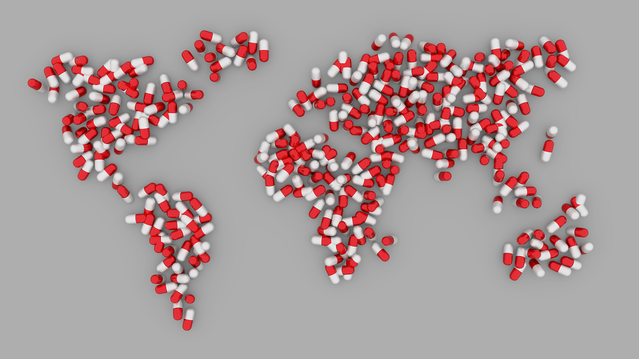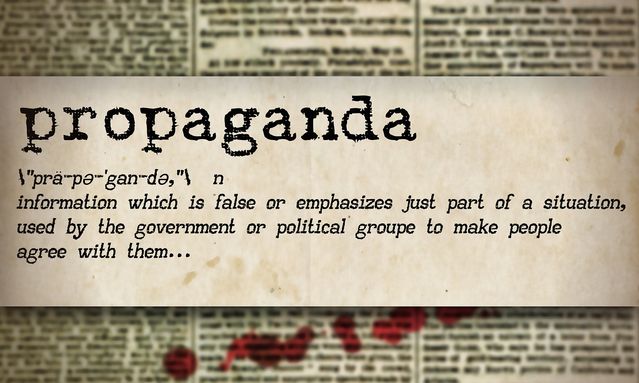Politics
Populism: Politics on Steroids
Opioids, populism, and propaganda: Understanding pre-midterm violence.
Posted October 29, 2018

Last Saturday, during a Shabbat service in Pittsburgh, 11 Jewish worshippers were gunned down in an act of cold-blooded domestic terrorism. Already recognized as the worst anti-Semitic attack in U.S. history, it comes days after the discovery of 14 pipe bombs sent to prominent liberal voices, including George Soros, the CNN offices, Barack Obama, Hillary Clinton, Joe Biden, and Robert De Niro.
Surges in pre-election violence and domestic terrorism (the U.S. is about to head into the 2018 midterms) are, sadly, quite common. One explanation for this phenomenon is that right-wing populist campaigns focus on creating fear and anger across the electorate, as anger statistically mobilizes voters better than any other emotion. This state of hypervigilant anger and fear might, compellingly, have been further amplified by the debilitating opioid epidemic currently blighting the U.S.

The Populist Playbook
Formed by the military strategy-focused SCL Group, the political consulting firm Cambridge Analytica was set up in 2013, closing shortly after Trump’s successful Presidential campaign had ended (and pre-empted, perhaps, by the explosive investigative report Data, Democracy and Dirty Tricks that profiled the company's powerful role in manipulating the emotions of the electorate to win elections) using military psychological operations (PSYOPS) techniques. As stated by the CIA, "Once his mind has been reached, the ‘political animal’ has been defeated… The target, then, is the minds of the population." It was a hugely successful approach for Cambridge Analytica and the many other political consulting firms (such as Bell Pottinger) that have successfully applied the approach across continents and nations to lucrative and powerful effect. But in physiological terms, how, exactly does it work—and why might the opioid crisis have dangerously amplified its anger-inducing effects?
Politics on Steroids
Gary Coby, Director of Advertising at the Republican National Committee, reported that on any given day, the Trump campaign was running around 40,000 to 50,000 variants of its ads, with a record 175,000 running the day of the third Presidential debate in October, 2016—a situation he referred to as "A/B testing on steroids." It reflects a mainstay of psychological warfare: creation of hypervigilance and polarization in a way that will be most emotionally appealing to every single voter. Propagandist approaches allow for each voter to receive a completely different message, if need be. The CIA Manual for Psychological Operations in Guerrilla Warfare discusses the necessity of creating a tinderbox hypervigilant mentality across an electorate that can be turned into anger and fury at a crucial moment, using a systematized approach of indoctrination and motivation, framing opponents as foreignizing, repressive, puppets is necessary, and engaging with disparaging, basic slogans wherever possible.
Reflexive Control
In 2016, Cambridge Analytica’s Western PSYOPS approach collided with Russia’s extremely efficient ‘Reflexive Control’ techniques, a form of propaganda-dependent mind-control based on the explicit manipulation of an electorate’s physiology and social world, to devastating effect. Mastering the art of maskirovka (camouflage, concealment and deception), dezinformatsiya (disinformation), vozhd (idealizing the leader), edinonachalniye (one-man control), dvoemyslie (doublethink), and vranyo (untruths with some grounding in reality), Russia’s interference in the U.S. Presidential elections was undoubtedly powerful and worked well alongside increasingly alarmist alt-right propaganda manufactured by organisations such as Breitbart and InfoWars.
Populism: The Drug
Many were confounded as to why the U.S. seemed to experience a moral schism in 2016. How could such a vitriolic candidate storm to victory so decisively? One potentially powerful variable that has, until now, not been considered, is the devastating physiological effect of opioid use.
The U.S. now consumes more than 80 percent of global opioid pills although it contains less than 5 percent of the world’s population and U.S. prescriptions have reportedly quadrupled in the last 20 years (CDC, 2014). Interestingly, Donald Trump became overwhelmingly popular in the areas of the U.S. most blighted by the opioid crisis. For example, Elliott County, referred to recently as the "ground zero of the US opioid crisis," voted Democrat for an astonishing 144 years. But in 2016, Donald Trump shot to unprecedented victory claiming an astonishing 70 percent of the vote. Neighbouring West Virginia, the most pro-Trump state in the U.S., demonstrates the worst opioid crisis figures in the U.S., with the highest rate of fatal drug overdoses of any state, and the highest reported rate of babies born on opioids. Whilst the idea of a disenfranchised electorate holds some sway on socio-economic grounds alongside a generic need for change in the face of austerity and disenchantment, there also seems to be more to the story.
Turning Empathy Off
The cannabinoid Spice is infamous amongst drug counsellors for "turning…empathy off,’" which is exactly what opioids, steroids and methamphetamines all do, too, alongside disrupting our ability to carry out salient moral judgements, inhibiting our ability to recognize the emotions of others (particularly fear), increasing paranoia and anger, and ramping up our anti-social behaviour (partly as it disrupts dopamine and serotonin levels that usually make us feel pleasure, reward, and contentment, and together act to inhibit aggressiveness). It is not hard, subsequently, to see how an opioid-blighted community might be considered a far "softer" target for right-wing populist campaigns, or why this dopamine-compromised demographic might be particularly receptive to the dopamine-spiking appeal of populism which has recast politics so effectively as entertainment.

The sale of anonymized medical data has become an incredibly lucrative marketplace, and it is not difficult for specialist third-party providers to match these anonymized records to electoral records, so it is certainly possible that the medical history, including drug use (alongside a knowledge of the empathy-blunting effects of opioids) might have played a significant role in micro-targeting strategies designed to drive voters to polling booths.
Populism: A Pandora’s Box
Ultimately, attempting to exploit the primal force of a homo sapiens biology—testosterone, dopamine, adrenaline, anandamide—as a means of winning votes opens a dangerous and uncontrollable Pandora’s Box. When a politician factors in the amplification effect of extraneous variables beyond their immediate control—alt-right propaganda, say, and drug use—they must acknowledge that containment of this mass endocrinological tinderbox is not achievable. Eventually consequences will be extreme. And any political party or politician that seeks to take a share in populism for their own benefit would do well to remember that fact.




